Here's the text.
Utilization of Hydrogen Energy
Last update date November 6, 2023
In Yokohama City, in the Yokohama Port Port and Harbor Plan (revised in December 2014), we decided to work on smart ports such as efficiency of energy use, low carbon, and ensuring business continuity in the event of a disaster. As part of this effort, we are making use of hydrogen energy.
Efforts to utilize hydrogen energy
‣Installation of self-reliant hydrogen fuel cell system (H2One)
‣Power supply using automotive H2One
‣Introduction of Fuel Cell Vehicles (FCVs)
For press releases, please refer to the bottom of this page.
Yokohama City has positioned the Yokohama Port Distribution Center as a model facility, and has installed a self-sustaining hydrogen fuel cell system, and is conducting demonstration experiments such as peak power cut and the use of emergency power supplies.
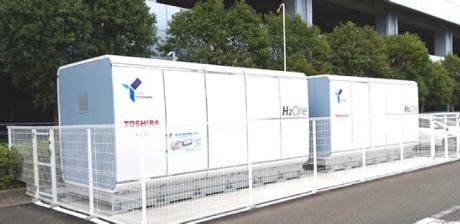
System Overview
The self-sustained hydrogen fuel cell system consists mainly of (1) water electrolytic hydrogen production equipment, (2) hydrogen storage tanks, (3) fuel cells, (4) storage batteries, and (5) hot water storage tanks.
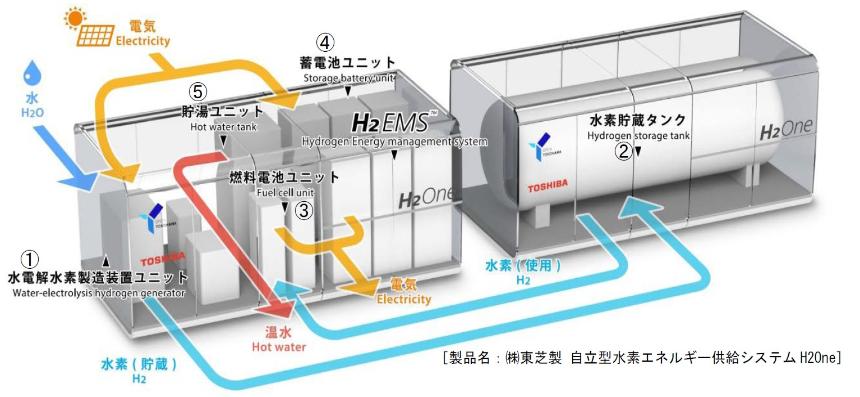
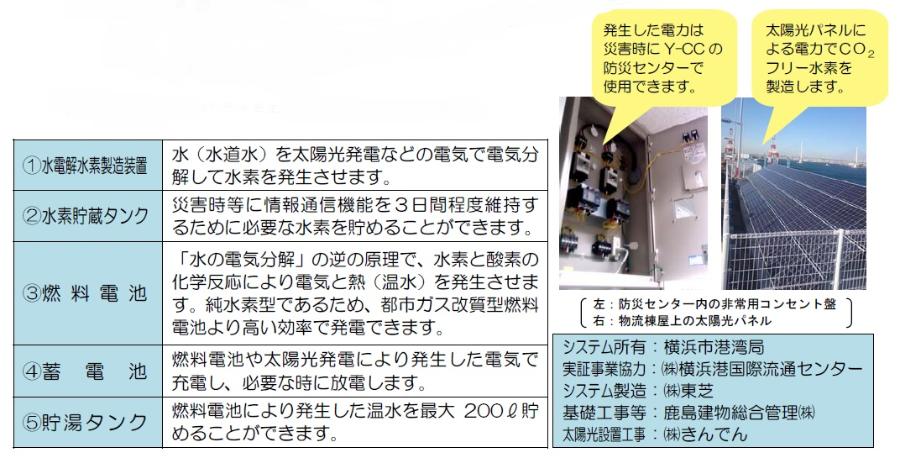
Equipment specifications

Driving mode
Peak cut operation mode
Manufacture and store hydrogen during periods of high power generation by solar panels, and power is supplied from fuel cells and storage batteries with hydrogen stored during periods of low solar panels or during periods of high power demand. , To cut the power peak (peak shift) of the facility.
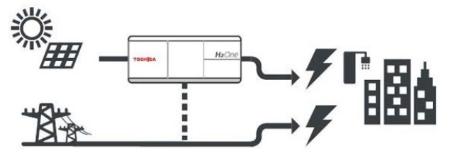
BCP operation mode
Operates independently when the grid power is cut off in the event of a disaster, and supplies power to disaster loads (emergency outlets, etc.).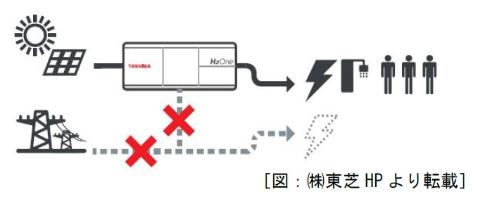
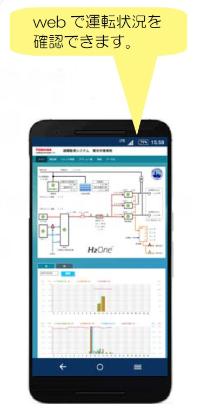
Characteristics of Hydrogen Energy
・It can be made from various raw materials such as petroleum, coal, natural gas, and biomass.
・Using electricity, it can be made by "electrolysis" of water.
In particular, hydrogen produced by electricity derived from renewable energy sources such as sunlight and wind power is also called environmentally friendly CO2-free hydrogen.
・When burned, it becomes water and does not produce harmful substances.
・Hydrogen is suitable for "storage" and "carrying".
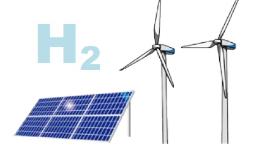
About Yokohama Port Distribution Center (Y-CC)
Y-CC is one of the largest comprehensive logistics facilities in Japan with a total floor area of approximately 320,000 square meters, located at Daikoku Pier, one of the major wharfs of Yokohama Port. It is operated by Yokohama Port International Distribution Center Co., Ltd., which was established in 1992 through joint investment from Yokohama City and other public-private partnerships, in order to strengthen the logistics function of Yokohama Port and revitalize the Minato economy.

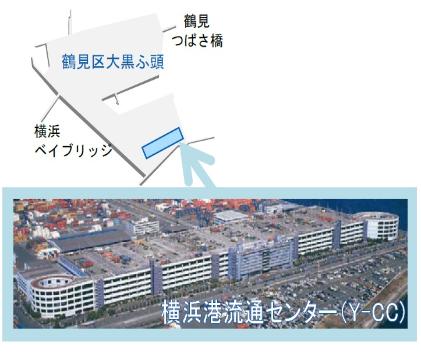
Document download
・Japanese version (PDF: 571KB)
By displaying and utilizing the on-board H2One at events, we are working to promote the use of hydrogen energy and to raise awareness among citizens.
At the Tokyo Bay Great Thanksgiving Day 2017 (Oct. 21, 2017, sponsored by the Tokyo Bay Great Thanksgiving Executive Committee) held in Akarengasoko Square, part of the event stage power supply was supplied from the on-board H2One.
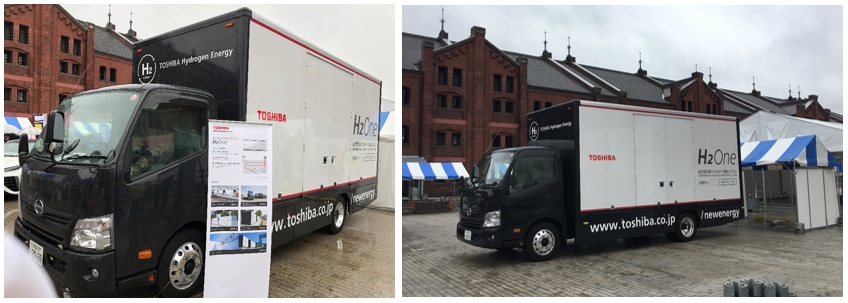
In January 2018, Toyota Motor Corporation introduced one MIRAI (Mirai) as a public vehicle for Port and Harbor Bureau. This is the 10th fuel cell vehicle (FCV: Fuel Cell Vehicle) in Motoichi.
FCVs use hydrogen as fuel, and CO2 emissions are zero during driving.
Through FCVs, Port and Harbor Bureau will also promote initiatives for the realization of a hydrogen society, and will promote initiatives to realize a hydrogen society.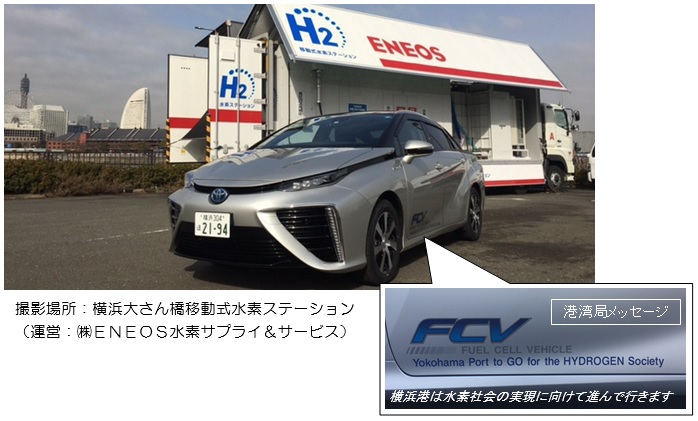
FCV Specifications

Press releases and information provision
▼Press release (Jan. 18, 2018)
Introduction of Fuel Cell Vehicles (FCVs) as Port and Harbor Bureau official vehicles (PDF: 442KB)
▼Press release (Apr. 27, 2017)
"Start operation of a self-sustained hydrogen fuel cell system utilizing CO2-free hydrogen from solar power generation" (PDF: 596KB)
▼Press release (Apr. 11, 2016)
"~As a step toward smarter ports using hydrogen-based-installed hydrogen fuel cell system was installed at Daikoku Futo!" (PDF:805KB)
▼Provision of information (November 4, 2015)
About ordering of self-sustained hydrogen fuel cell system (PDF: 771KB)
▼Press release (July 28, 2015)
"~ We will work on smarter Yokohama Port using hydrogen-Introducing a self-sustaining hydrogen fuel cell system at Daikoku Futo." (PDF:412KB)
In order to open PDF files, you may need a separate PDF reader.
If you do not have it, you can download it free of charge from Adobe.
![]() To download Adobe Acrobat Reader DC
To download Adobe Acrobat Reader DC
For inquiries to this page
Policy Coordination Division, Port and Harbor Bureau
Phone: 045-671-7165
Phone: 045-671-7165
Fax: 045-671-7310
Email address: kw-seisaku@city.yokohama.jp
Page ID: 810-238-496







